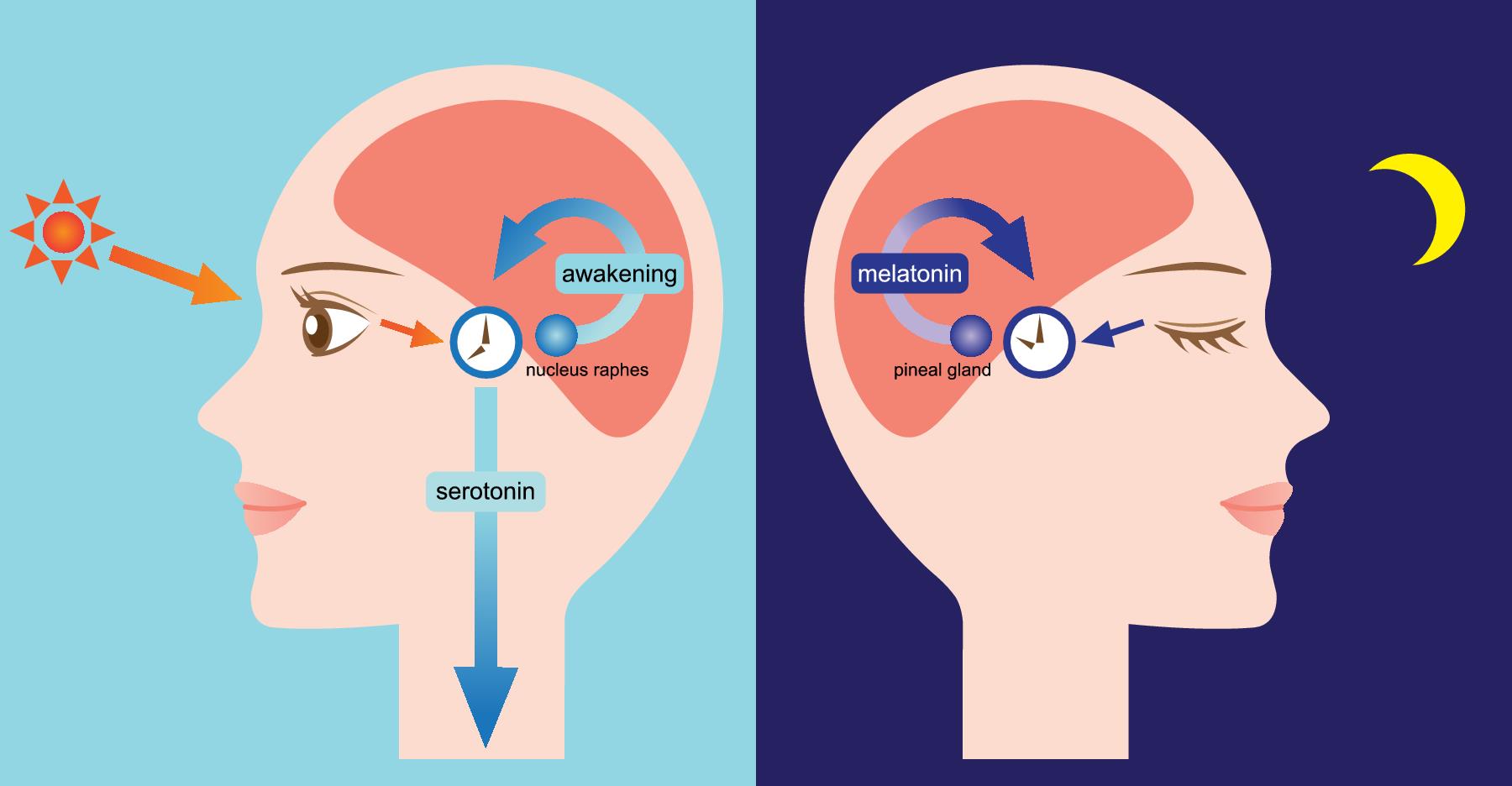Circadian Rhythm

Your body has a master clock set in a control center of your brain. It runs your sleep-wake cycle. This circadian clock gets set primarily by light and darkness running through the eyes to the brain, along with meal and exercise schedules.
Types of Circadian Rhythm Sleep Disorders (CRSD)
-
Delayed Sleep Phase Type: “night owl”. You have difficulty falling asleep, but go to sleep late – 2am or later.
-
Advanced Sleep Phase Type: “early bird”. You prefer an early bedtime (6-9pm) and wake up early in the morning. This type is not usually a ‘disorder’ unless it interferes with your required sleep-wake schedule.
-
Jet Lag Type: This occurs when your internal ‘clock’ remains set to the sleep-wake cycle of your original time zone. Older individuals tend to experience this type more than those in younger age groups.
-
Shift Work Type: This type may cause sleepiness and poor performance during your working hours and difficulty sleeping during your daytime sleep period. The solution is to follow the same sleep-wake schedule on off days as work days. Adjusting your internal clock is even more of a problem if you frequently rotate shifts.
-
Free-Running Type: The most common cause of non-24 hour sleep-wake disorder is blindness. Other causes include changes in light sensitivity, environmental factors, and hormonal factors. Your preferred sleep period changes daily, usually shifting 1-2 hours later each day.
-
Irregular Sleep-Wake Type: Irregular sleep-wake can occur when your exposure to bright light or daily activities vary, and when there are age-related changes in the brain (senile dementia). Without a schedule, you may doze on and off throughout each 24-hour period. It is common in nursing home patients and for those with an extremely disorganized living pattern.
Circadian rhythm sleep disorders are frequently diagnosed by history, sleep logs and a special electronic wristwatch that detects sleep/wake cycles known as actigraphy. Treatment of circadian disorders is challenging, but frequently involves medications and properly timed exposure to bright light.

